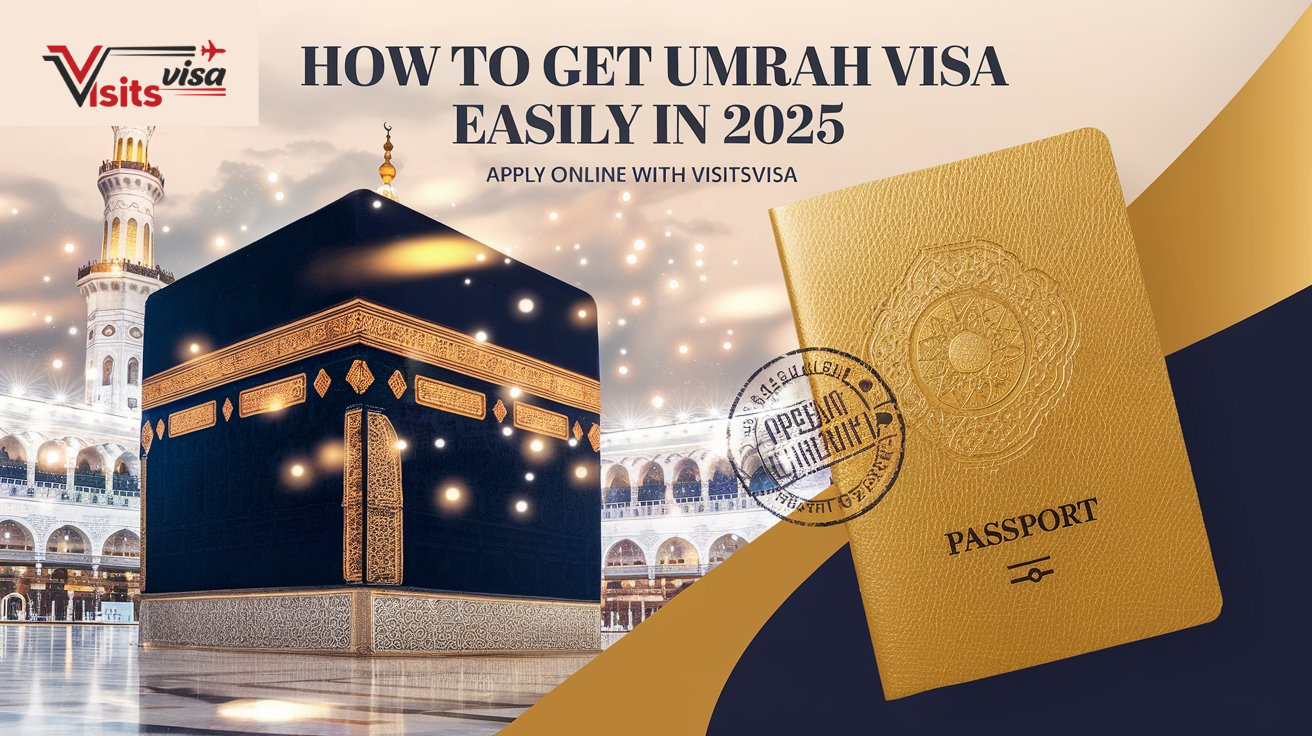1. Introduction to Masjid al-Haram
Historical Significance
Masjid al-Haram, also known as the Grand Mosque, is not just the largest mosque in the world but also the most revered. Located in the heart of Makkah, Saudi Arabia, it surrounds the Kaaba, the holiest site in Islam. The mosque has a profound historical significance as it dates back to the time of Prophet Ibrahim (Abraham), who, along with his son Ismail, is believed to have built the Kaaba. Over the centuries, Masjid al-Haram has undergone numerous expansions, transforming it into the colossal structure that it is today.
Architectural Grandeur
The architecture of Masjid al-Haram is a testament to Islamic art and design. Spanning over 356,800 square meters, the mosque can accommodate millions of worshippers, especially during the Hajj pilgrimage. The mosque’s structure is a blend of traditional Islamic motifs and modern construction techniques. The minarets, domes, and arches are adorned with intricate calligraphy and geometric patterns, symbolizing the unity and infinity of God. The mosque’s central courtyard, where the Kaaba is situated, is surrounded by multi-tiered prayer halls, marble floors, and towering minarets that reach up to the sky, offering a sight of unmatched grandeur.
Religious Importance
Masjid al-Haram holds unparalleled importance in Islam. It is the qibla, the direction towards which Muslims around the world face during their prayers. The Kaaba, the cubic structure draped in a black silk and gold curtain, is believed to be the first house of worship dedicated to the One God. Pilgrims who visit Masjid al-Haram perform the Tawaf, circumambulating the Kaaba seven times in a counter-clockwise direction, a ritual that signifies the unity of believers in the worship of the One God. The mosque is also the starting and ending point of the Hajj pilgrimage, one of the Five Pillars of Islam, which every Muslim must undertake at least once in their lifetime if they are able.
2. The Role of Masjid al-Haram in Islam
Center of Islamic Faith
Masjid al-Haram is often referred to as the beating heart of Islam. It is here that the physical and spiritual dimensions of Islam converge, creating a space where the divine and the earthly meet. For Muslims, praying within the precincts of this mosque holds immense rewards, with the Prophet Muhammad (PBUH) stating that one prayer in Masjid al-Haram is equivalent to 100,000 prayers elsewhere. The mosque serves as a constant reminder of the central tenet of Islam: the oneness of God and the unity of the Muslim Ummah.
The Site of Hajj and Umrah
Masjid al-Haram is the focal point for the two Islamic pilgrimages: Hajj and Umrah. While Hajj is obligatory and performed during specific days in the Islamic month of Dhul-Hijjah, Umrah can be undertaken at any time of the year. Both pilgrimages involve a series of rituals that include Tawaf around the Kaaba and the Sa’i between the hills of Safa and Marwah, both of which are within the bounds of Masjid al-Haram. The completion of these rituals at this sacred site is believed to bring immense spiritual rewards and the forgiveness of sins.
The Spiritual Connection for Muslims Worldwide
For Muslims across the globe, Masjid al-Haram is not just a place of worship; it is a symbol of spiritual connection. The mosque represents the ultimate destination for every Muslim’s spiritual journey. The experience of standing in front of the Kaaba, amidst millions of fellow believers, fosters a profound sense of unity and equality, where all stand before God as equals, irrespective of their social status, wealth, or nationality. This spiritual connection is nurtured by the collective prayers, the shared rituals, and the deep sense of reverence that permeates every aspect of the pilgrimage.
3. Umrah: The Lesser Pilgrimage
What is Umrah?
Umrah, often referred to as the ‘lesser pilgrimage,’ is a spiritual journey to Makkah that can be undertaken at any time of the year, unlike Hajj, which has specific dates. The word “Umrah” in Arabic means “to visit a populated place,” and this pilgrimage, while not obligatory, is highly recommended in Islam. Umrah involves a set of rituals, including Tawaf around the Kaaba and the Sa’i between Safa and Marwah, which are performed in a state of Ihram, a sacred state of purity and piety. The rituals of Umrah are shorter and less complex than those of Hajj, making it accessible to a broader range of people.
Importance of Umrah in Islam
While Umrah is not mandatory, it holds significant spiritual value. It is seen as an act of worship that purifies the soul and brings the pilgrim closer to God. The Prophet Muhammad (PBUH) has said that the performance of Umrah can be an expiation for sins committed between it and the previous Umrah. It is a journey that symbolizes humility, devotion, and the readiness to submit to God’s will. For many, performing Umrah is a deeply personal experience, offering a chance to reflect on their faith, seek forgiveness, and renew their commitment to living a righteous life.
Difference Between Hajj and Umrah
Although Hajj and Umrah share some similarities, they are distinct in several ways. Hajj is one of the Five Pillars of Islam and is obligatory for all Muslims who are physically and financially able to undertake it at least once in their lifetime. It occurs during a specific period in the Islamic calendar, from the 8th to the 12th of Dhul-Hijjah. Umrah, on the other hand, is a voluntary act of worship that can be performed at any time of the year. The rituals of Umrah are fewer and simpler, involving only Tawaf and Sa’i, whereas Hajj includes additional rites such as standing on the plains of Arafat and the symbolic stoning of the devil at Mina.
4. The Process of Performing Umrah
Step-by-Step Guide to Umrah Rituals
Performing Umrah involves several key rituals, each with its own spiritual significance. The journey begins with the intention (Niyyah) to perform Umrah, followed by entering the state of Ihram. This is done at one of the Miqats, designated points around Makkah where pilgrims must don the simple white garments of Ihram and recite the Talbiyah, a prayer declaring their intention. Upon entering Masjid al-Haram, the pilgrim begins Tawaf, the circumambulation of the Kaaba, which is performed seven times in a counter-clockwise direction.
The Spiritual Journey of Tawaf
Tawaf is one of the most profound acts of worship in Islam. As the pilgrim walks around the Kaaba, they are reminded of the oneness of God and the unity of all Muslims. Each circuit starts from the Black Stone, which is kissed or touched if possible, and ends at the same point. The act of Tawaf symbolizes the believer’s submission to God, with the Kaaba representing the center of their spiritual universe. The continuous movement around the Kaaba is also a reflection of the constant worship of God by the angels, and the pilgrim is invited to join in this eternal act of devotion.
Sa’i: The Walking between Safa and Marwah
Following Tawaf, the pilgrim performs Sa’i, the walking back and forth seven times between the hills of Safa and Marwah, located within Masjid al-Haram. This ritual commemorates the actions of Hagar, the wife of Prophet Ibrahim, who ran between these hills in search of water for her son Ismail. Sa’i is a powerful reminder of trust in God and perseverance in times of difficulty. The water that Hagar sought was miraculously provided by God in the form of the Zamzam well, which continues to flow to this day, and pilgrims are encouraged to drink from it as part of the ritual.
Significance of Cutting Hair (Halq/Taqsir)
The final rite of Umrah is the cutting of hair, known as Halq (shaving the head) for men and Taqsir (cutting a small portion of hair) for women. This act symbolizes the pilgrim’s spiritual renewal and the shedding of worldly attachments. By cutting their hair, pilgrims signify their readiness to return to their daily lives with a renewed sense of purpose and devotion to God. It also marks the end of the state of Ihram, allowing the pilgrim to resume their normal activities.
5. Umrah Visa Requirements
Eligibility Criteria for Umrah Visa
To perform Umrah, pilgrims must first obtain an Umrah visa, which is a specific type of visa issued by the Kingdom of Saudi Arabia. The eligibility criteria for an Umrah visa include being a Muslim and possessing a valid passport with at least six months of validity remaining. Applicants must also have proof of travel arrangements, such as a confirmed return ticket and accommodation in Saudi Arabia. Additionally, women under the age of 45 must be accompanied by a Mahram, a male relative such as a husband, father, or brother, unless they are traveling with an organized group.
Documents Required for Umrah Visa Application
Applying for an Umrah visa requires several key documents. These include a completed visa application form, passport-sized photographs, a copy of the applicant’s passport, and proof of vaccination against meningitis and other specified diseases. Some countries may also require additional documentation, such as a letter of invitation from a Saudi sponsor or proof of financial solvency. It’s essential to check the specific requirements based on your country of residence, as these can vary.
Umrah Visa Fees and Validity
The cost of an Umrah visa varies depending on the country of application and the specific services chosen. The visa is generally valid for 30 days, during which pilgrims can stay in Saudi Arabia and perform Umrah. However, it’s important to note that the Umrah visa is strictly for pilgrimage purposes and does not allow for any other activities, such as business or employment. Once the visa expires, pilgrims must leave the country, as overstaying can result in penalties.
6. VisitsVisa: Your Trusted Partner for Umrah Visa
Introduction to VisitsVisa
VisitsVisa is a leading visa consultancy firm that specializes in providing hassle-free visa services for pilgrims worldwide. With a deep understanding of the complexities involved in the visa application process, VisitsVisa offers comprehensive support to ensure that pilgrims can focus on their spiritual journey rather than bureaucratic hurdles. The company has a reputation for reliability, efficiency, and personalized service, making it a trusted choice for those planning their Umrah pilgrimage.
Why Choose VisitsVisa for Your Umrah Journey?
Choosing VisitsVisa for your Umrah visa needs offers several advantages. The company’s expertise in visa regulations and requirements ensures that your application is processed smoothly and without delays. VisitsVisa also provides dedicated customer support, guiding you through every step of the process, from filling out forms to securing the necessary documents. With a focus on customer satisfaction, VisitsVisa tailors its services to meet the specific needs of each pilgrim, offering flexible packages and competitive pricing.
Services Offered by VisitsVisa
VisitsVisa offers a range of services designed to make your Umrah journey as seamless as possible. These include visa processing, document verification, and submission, as well as travel and accommodation arrangements. The company also provides valuable advice on health and safety guidelines, ensuring that you are well-prepared for your pilgrimage. With VisitsVisa, you can rest assured that every aspect of your Umrah trip is handled with care and professionalism.
7. How to Apply for an Umrah Visa through VisitsVisa
Step-by-Step Application Process
Applying for an Umrah visa Online through VisitsVisa is a straightforward process. First, you need to contact VisitsVisa to discuss your requirements and choose the appropriate visa package. Once you’ve selected a package, you’ll be guided through the necessary paperwork, including completing the visa application form and gathering the required documents. VisitsVisa will then submit your application to the Saudi Arabian consulate on your behalf and keep you informed of the progress.
Online Application Procedure
For added convenience, VisitsVisa offers an online application service that allows you to apply for your Umrah visa from the comfort of your home. The online platform is user-friendly and secure, enabling you to upload your documents, track the status of your application, and receive updates via email or SMS. The online service also includes a live chat feature, where you can get instant answers to any questions you may have.
Important Tips for a Successful Application
To ensure a smooth application process, it’s essential to follow a few key tips. First, make sure all your documents are complete and up-to-date, as incomplete applications can cause delays. Double-check the spelling of your name and other details on the visa application form to avoid errors. It’s also advisable to apply for your visa well in advance of your planned travel dates, as processing times can vary. Finally, stay in regular contact with VisitsVisa to receive timely updates on your application status.
8. Special Considerations for Women and Children
Requirements for Female Pilgrims
Women planning to perform Umrah need to be aware of specific requirements. As mentioned earlier, women under the age of 45 must be accompanied by a Mahram or travel with an organized group. Those over 45 can travel without a Mahram but must have a notarized letter of consent from their Mahram if they are traveling alone. Women should also adhere to the dress code and wear modest clothing, typically an abaya, during their pilgrimage.
Umrah Visa for Minors
Children of all ages can perform Umrah, but they must have their own visa, and their passports should be valid for at least six months. Parents or guardians need to provide additional documentation, such as the child’s birth certificate and proof of relationship to the accompanying adults. It’s also important to consider the child’s health and comfort, as the pilgrimage involves a significant amount of walking and physical exertion.
Traveling with Family for Umrah
For families planning to perform Umrah together, careful planning is essential. VisitsVisa offers family packages that cater to the specific needs of families, including accommodation in family-friendly hotels near Masjid al-Haram and transportation services that accommodate children. Traveling as a family can be a rewarding experience, allowing members to bond spiritually and support each other throughout the pilgrimage.
9. Travel Arrangements with VisitsVisa
Flight Booking Assistance
VisitsVisa provides comprehensive flight booking assistance to ensure that your journey to Makkah is smooth and convenient. The company has partnerships with leading airlines, offering competitive fares and flexible booking options. Whether you prefer direct flights or stopovers, VisitsVisa can help you find the best route to suit your schedule and budget.
Accommodation Options Near Masjid al-Haram
Finding suitable accommodation near Masjid al-Haram is crucial for a comfortable Umrah experience. VisitsVisa offers a range of accommodation options, from luxury hotels to more budget-friendly choices, all within close proximity to the mosque. The company ensures that all accommodations meet high standards of cleanliness, safety, and comfort, providing you with a restful environment during your pilgrimage.
Transportation Services in Makkah and Madinah
To make your stay in Saudi Arabia as hassle-free as possible, VisitsVisa also offers transportation services between Makkah, Madinah, and other key locations. Whether you need a private car, shared shuttle, or group transportation, VisitsVisa can arrange it for you. These services are designed to ensure that you can focus on your spiritual journey without worrying about logistics.
10. Health and Safety Guidelines for Pilgrims
Vaccination Requirements for Umrah
Health and safety are top priorities when traveling for Umrah. One of the key requirements for obtaining an Umrah visa is proof of vaccination against meningitis. Depending on your country of origin, you may also need vaccinations against other diseases such as yellow fever, polio, and influenza. It’s advisable to consult with a healthcare provider well before your trip to ensure that all vaccinations are up to date.
Travel Insurance and Health Precautions
Purchasing travel insurance is highly recommended for all pilgrims, as it provides coverage for unexpected medical expenses, trip cancellations, and other emergencies. VisitsVisa offers guidance on selecting the right travel insurance plan to meet your needs. Additionally, it’s important to take health precautions, such as staying hydrated, avoiding excessive sun exposure, and being mindful of your physical limitations during the pilgrimage.
COVID-19 Guidelines for Umrah Pilgrims
In light of the ongoing COVID-19 pandemic, the Saudi Arabian authorities have implemented specific guidelines for Umrah pilgrims. These include mandatory PCR testing before departure, quarantine requirements upon arrival, and adherence to social distancing measures while performing rituals. VisitsVisa keeps up-to-date with the latest regulations and ensures that all pilgrims are informed of the necessary steps to stay safe during their journey.
11. Cultural and Etiquette Guidelines for Visiting Masjid al-Haram
Dress Code for Pilgrims
Maintaining modesty in dress is essential when visiting Masjid al-Haram. Men are required to wear the Ihram, which consists of two white, unstitched cloths, while women should wear an abaya and cover their hair with a scarf. It’s important to avoid clothing that is too tight, transparent, or revealing. The dress code reflects the principle of humility and equality, as all pilgrims, regardless of their social status, wear simple and modest attire.
Behavior Inside Masjid al-Haram
While inside Masjid al-Haram, pilgrims are expected to maintain a respectful and serene demeanor. This includes speaking softly, refraining from arguments, and being mindful of others’ space. Photography and the use of mobile phones should be kept to a minimum to preserve the sanctity of the environment. Pilgrims should also be aware of the importance of cleanliness, ensuring that they do not litter or disturb the cleanliness of the mosque.
Respectful Practices and Traditions
Understanding and respecting local customs is crucial when visiting Masjid al-Haram. For example, it is customary to greet fellow pilgrims with “Assalamu Alaikum” and respond with “Wa Alaikum Assalam.” It is also important to respect prayer times and avoid unnecessary movements or distractions during prayers. Additionally, pilgrims should be patient and avoid pushing or shoving, especially during crowded times, to maintain the dignity and respect of the pilgrimage.
12. Exploring the Surroundings of Masjid al-Haram
Important Landmarks Near Masjid al-Haram
Makkah is home to several significant landmarks that are worth exploring during your visit. These include the Abraj Al Bait Towers, also known as the Makkah Royal Clock Tower, which houses a large shopping mall, hotels, and prayer rooms. Another important site is the Cave of Hira, located on the Jabal al-Nour mountain, where Prophet Muhammad (PBUH) received the first revelations of the Quran. The Jannat al-Mu’alla cemetery, where many of the Prophet’s family members are buried, is also nearby.
Shopping and Dining Options in Makkah
For those interested in shopping, Makkah offers a variety of markets and malls where you can find everything from religious souvenirs to luxury goods. The Al Diyafa Mall and the Makkah Mall are popular choices, offering a wide range of shops, restaurants, and entertainment options. Traditional markets, such as the Al-Hijaz Souk, provide a more authentic experience, where you can purchase prayer beads, Islamic books, and other religious items. When it comes to dining, Makkah boasts a diverse culinary scene, with options ranging from local Saudi cuisine to international dishes.
Spiritual Sites to Visit in Makkah
In addition to Masjid al-Haram, there are several other spiritual sites in Makkah that hold great significance for Muslims. The Mount Arafat, also known as the “Mountain of Mercy,” is where the Prophet Muhammad (PBUH) delivered his Farewell Sermon. The site of Mina, where the symbolic stoning of the devil takes place during Hajj, is another important location. Visiting these sites can enhance your spiritual journey and provide a deeper understanding of the historical and religious context of the pilgrimage.
13. The Spiritual Impact of Visiting Masjid al-Haram
Personal Reflections from Pilgrims
The experience of visiting Masjid al-Haram is often described as life-changing. Many pilgrims share personal stories of how the pilgrimage has deepened their faith, brought them closer to God, and transformed their lives. The sense of peace and tranquility that envelops the mosque, combined with the overwhelming feeling of standing before the Kaaba, leaves a lasting impression on the hearts of all who visit. These reflections highlight the profound spiritual impact that Masjid al-Haram has on pilgrims from all walks of life.
The Emotional and Spiritual Renewal
For many, the journey to Masjid al-Haram represents a time of emotional and spiritual renewal. The rituals of Umrah, from Tawaf to Sa’i, are designed to cleanse the soul and strengthen the connection with God. Pilgrims often return home with a renewed sense of purpose, a deeper understanding of their faith, and a commitment to leading a more pious and righteous life. This spiritual renewal is one of the most cherished outcomes of the pilgrimage.
Continuing the Spiritual Journey After Returning Home
The end of the pilgrimage does not signify the end of the spiritual journey. For many pilgrims, the experience of visiting Masjid al-Haram serves as a catalyst for continued spiritual growth. Upon returning home, pilgrims are encouraged to maintain the habits of worship and devotion that they practiced during their pilgrimage. This includes regular prayer, reading the Quran, and engaging in acts of charity. The lessons learned during the pilgrimage can guide pilgrims in leading a more meaningful and spiritually fulfilling life.
14. Frequently Asked Questions (FAQs) About Umrah and Masjid al-Haram
Common Queries About Umrah
Q: When is the best time to perform Umrah? A: Umrah can be performed at any time of the year, but many prefer to go during the Islamic months of Rajab, Sha’ban, and Ramadan due to the increased spiritual rewards.
Q: Can I perform Umrah more than once? A: Yes, you can perform Umrah multiple times during your stay in Saudi Arabia, as long as your visa remains valid.
Q: Is it necessary to speak Arabic to perform Umrah? A: While Arabic is the primary language used in Saudi Arabia, many pilgrims perform Umrah without speaking Arabic. It’s helpful to learn a few basic phrases, but there are usually English-speaking guides and signs in English.
Practical Tips for First-Time Pilgrims
For those embarking on their first Umrah journey, it’s important to prepare both physically and spiritually. Make sure to pack essentials such as comfortable footwear, a travel prayer mat, and a portable charger. Staying hydrated and maintaining a balanced diet are crucial, as the pilgrimage involves a lot of physical activity. It’s also helpful to familiarize yourself with the rituals and prayers of Umrah beforehand, so you can focus on your spiritual experience.
Important Contact Information for Pilgrims
Before you travel, make sure you have the contact details for your country’s embassy or consulate in Saudi Arabia. VisitsVisa provides 24/7 customer support for pilgrims, so you can reach out to them at any time during your journey. It’s also a good idea to carry a list of emergency contacts, including local hospitals and your accommodation in Makkah and Madinah.
This comprehensive guide is designed to help you navigate every aspect of your Umrah journey, from understanding the significance of Masjid al-Haram to securing your Umrah visa through VisitsVisa. Whether you’re a first-time pilgrim or have performed Umrah before, this guide provides valuable insights and practical advice to make your pilgrimage a deeply fulfilling and spiritually enriching experience.







